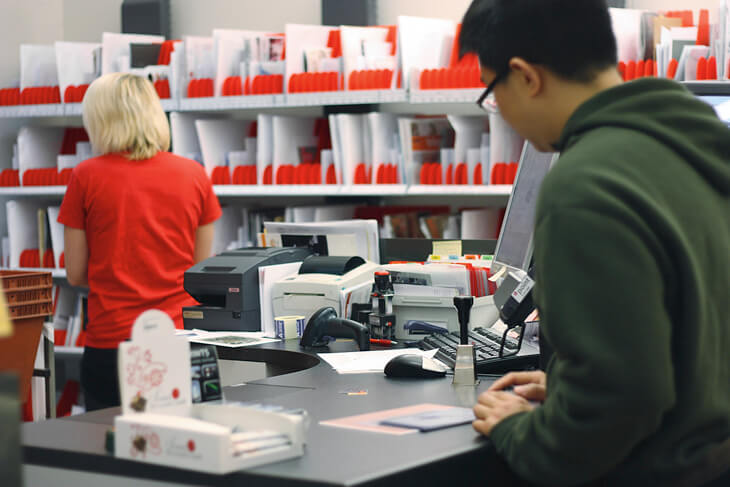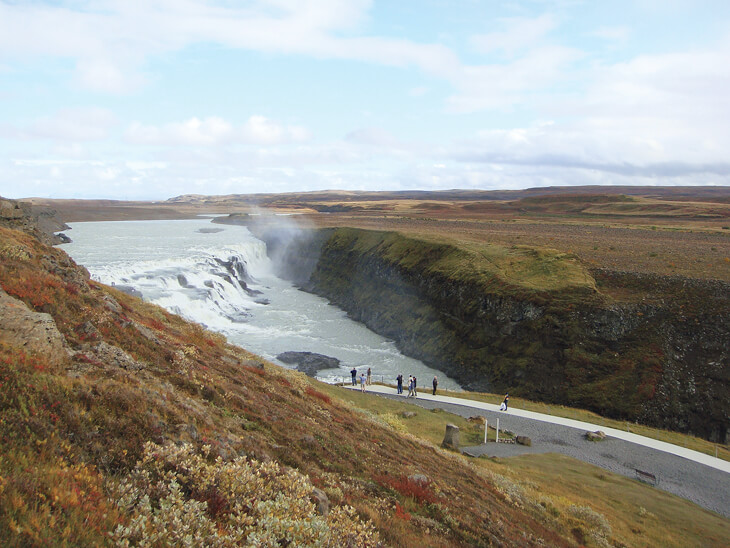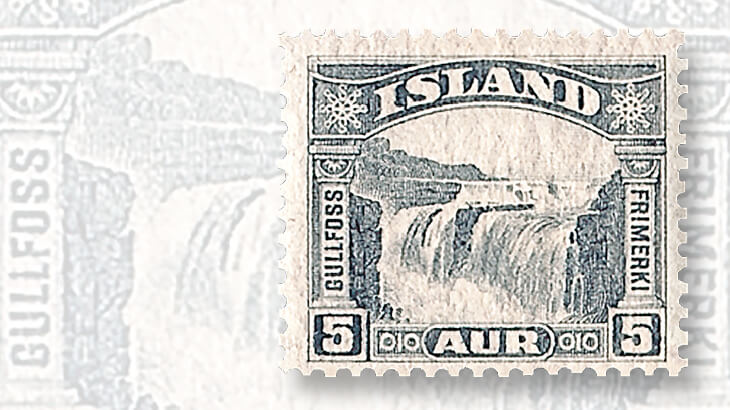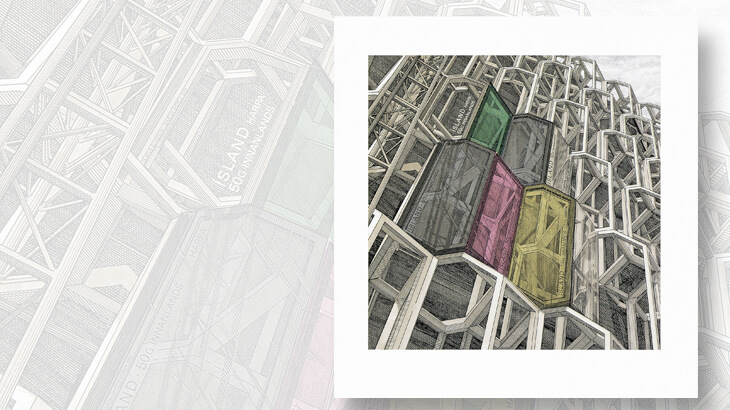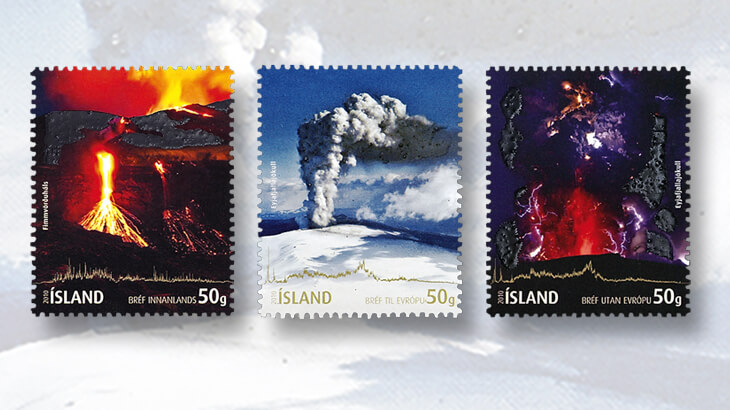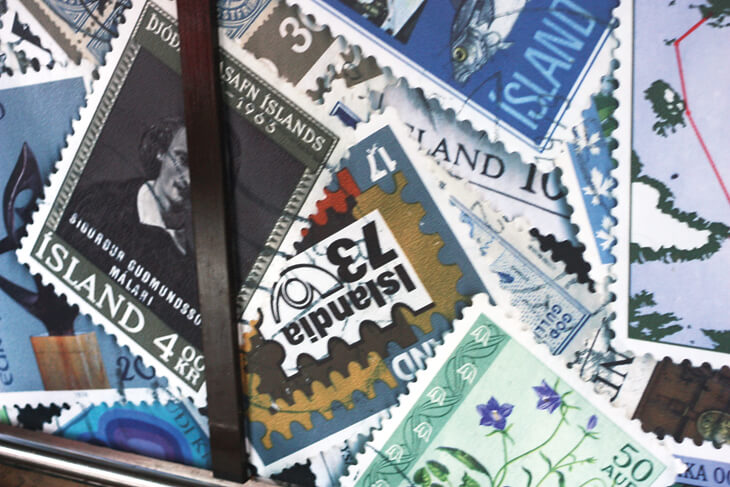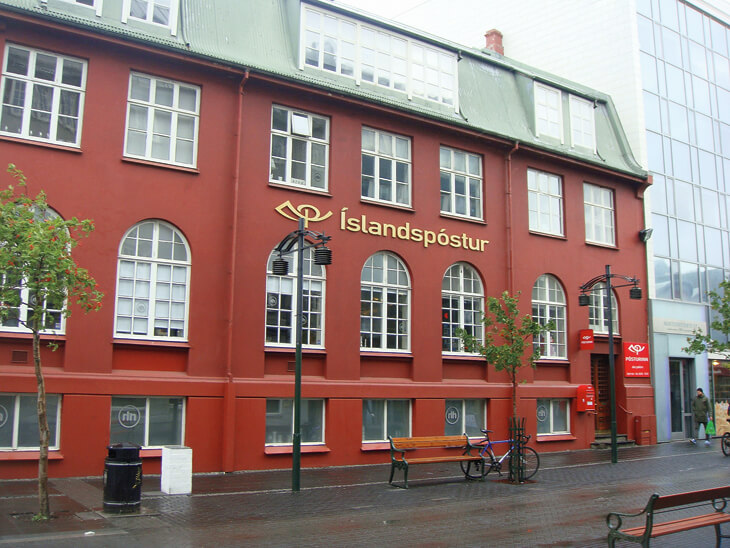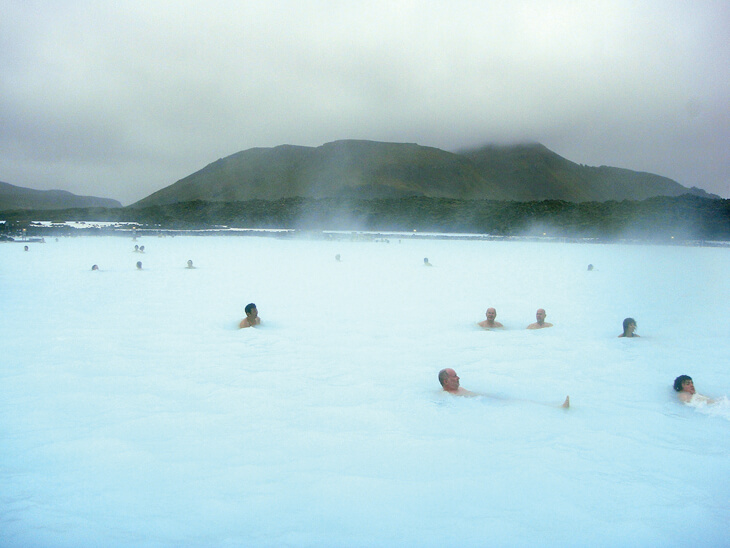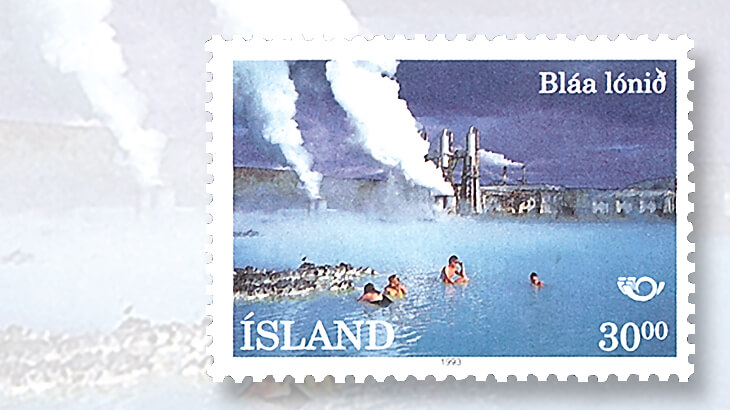World Stamps
Stamps, and the volcanoes and hot springs they portray, part of Iceland’s appeal
By Wayne Chen
Iceland is one of my top-most recommended travel destinations. I first traveled to Iceland in 2001, and my visits then and since were so unforgettable that I am always eager to return.
I recently revisited the country and had a wonderful time touring some of my most memorable spots, including philatelic places.
Reykjavik is the capital and also the largest city. A pedestrian-friendly city, it is very modern and clean.
Connect with Linn’s Stamp News:
Sign up for our newsletter
Like us on Facebook
Follow us on Twitter
While Reykjavik is small in size and population compared with most other European capitals, the Nordic cultural scene makes for a lively and interesting city.
From my point of view, it is a classic Scandinavian city with a modern twist.
Iceland’s isolated geographic location also isolated it in other ways. The cultural landmarks seem to have skipped over the majority of European history and jumped from primitive architecture (such as turfed houses) to ubiquitous modern buildings in the city.
A major philatelic destination during both of my trips was the Reykjavik central post office located downtown at Posthusstraeti 5, Reykjavik 101, and easily accessible on foot.
The post office had been renovated between my two visits, which were about a decade apart.
There were attractive philatelic bulletins and posters around the lobby so customers are aware of what’s available.
I purchased stamps online from Iceland Post shortly before and after my visit. Strangely, there are fewer varieties available at the main post office than through the online shop, but it was still fulfilling to visit the post office and create a personalized cover or postcard as a locally canceled souvenir.
Located on the harbor near downtown, just a short walk from the central post office, is the Harpa concert hall, home to the Iceland Symphony Orchestra and the Icelandic Opera.
It is truly a world-class concert hall with magnificent architecture.
Its honeycomb-like facade of panels of different colored glass in geometric shapes is worth a sightseeing visit, whether you also attend a concert or not. Guided tours of the building are available.
Iceland Post issued a souvenir sheet (Scott 1238) on May 4, 2011, to commemorate the opening of the concert hall. Its design is unique: an intaglio-printed souvenir sheet, on which five pieces of different sizes and colors of polygonal glass on the image of the building’s facade become imperforate, self-adhesive postage stamps. The sheet itself is an artwork.
Iceland Post describes the Harpa image on the stamps (which are still available on its website) as “reminiscent of the crystallized basalt columns commonly found in Iceland, the southern facades create kaleidoscopic reflections of the city and the surrounding landscape.”
One of the landmarks of Reykjavik is the Church of Hallgrimur, Iceland’s largest and tallest church. Located on a gentle hilltop, it is visible throughout the city, and has a viewing deck for a panoramic vista of Reykjavik.
The statue in front of the church is of special historic and philatelic interest to Americans.
The statue commemorates Leif Erickson, believed by many to be the first European to land in North America, centuries before Christopher Columbus. The statue was sculpted by Alexander Stirling Calder (father of Alexander Calder, creator of hanging mobile sculptures) and was a gift from the United States in 1930, for the 1,000th anniversary of the founding of Iceland’s parliament.
A 30-eyrir stamp on the souvenir sheet issued by Iceland on Oct. 9, 1938, for Leif Erickson Day (Scott B6) shows the Calder statue. A 6¢ U.S. stamp (1359) issued on Leif Erickson Day, Oct. 9, 1968, also depicts the statue.
On the outskirts of Reykjavik, close to the international airport at Keflavik, is the world-famous geothermal hot-springs spa resort called Blue Lagoon. This is one of my most recommended places to visit in the world.
The natural volcanic hot-spring pool has a light blue color caused by the minerals. The spa bottom has volcanic rock along with very fine white sand, both supposedly good for the skin.
Iceland issued a Blue Lagoon stamp (Scott 768) in 1993, but the stamp cannot do justice to the actual experience. I wish that everyone could pay a visit to this place at least once.
In addition to the Blue Lagoon, Iceland has other famous natural wonders. If you are in Iceland en route to elsewhere, or have only a few days to spend near Reykjavik, I recommend the Golden Circle day-tour by bus, which includes many of the natural wonders.
Some of these sites been pictured on stamps. For example, Gullfoss (Golden Falls) is shown on stamps issued in 1931-32 (Scott 170-175), and erupting geysers are pictured on stamps of 1938-47 (203-208B).
If you are staying longer, perhaps five or seven days, and would like to try to see the northern lights (aurora borealis), I recommend renting a vehicle and driving Iceland’s Ring Road, which goes around the island and offers sights of active volcanoes, icebergs, and waterfalls, as well as the northern lights.
Keep reading about the stamps of Iceland:
An introduction to the stamps of the Nordic region and Scandinavia
Iceland’s 2014 Europa stamps printed on different papers
Classic Stamps of the World: Iceland switched from portraits to photographs for 1925 set
MORE RELATED ARTICLES
Headlines
-
US Stamps
Oct 7, 2024, 3 PMMcMurtrie dismissed as APS education director following Sept. 21 arrest
-
US Stamps
Oct 7, 2024, 12 PMVasiliauskas named president of Mystic Stamp Co.
-
US Stamps
Oct 6, 2024, 5 PMApgar souvenir card available
-
US Stamps
Oct 6, 2024, 4 PMFirst Continental Congress and U.N. stamps receive Scott catalog numbers
